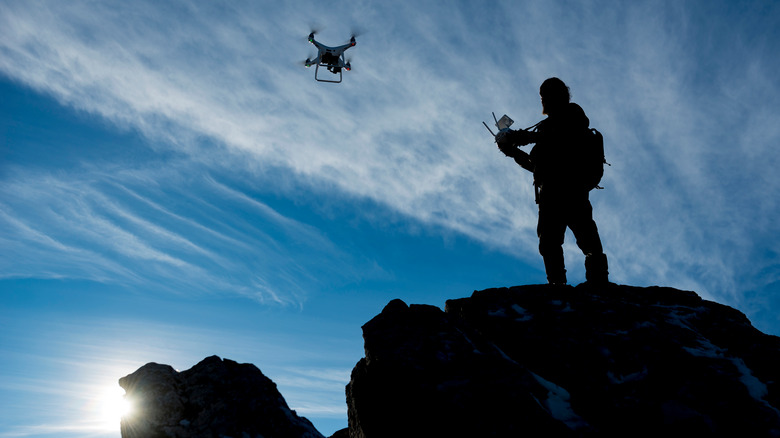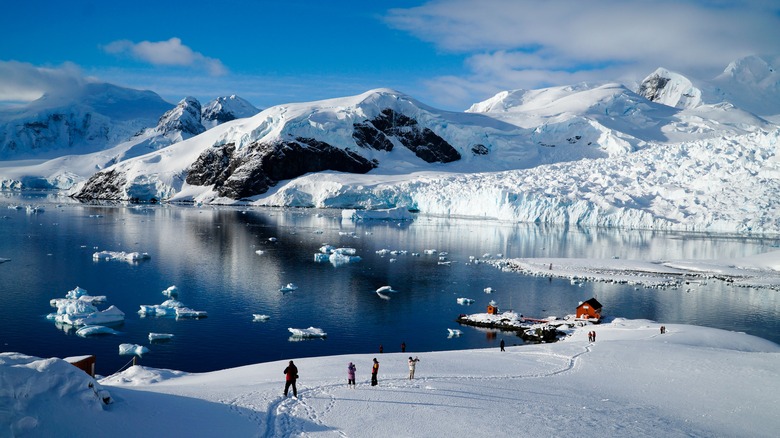The Reason Why Drones Are Banned In Antarctica
As drone technology has advanced and the hobby of drone photography has proliferated, we have become accustomed to being regaled by unseen images from the heart of a volcano to incredible sweeping panoramas. Just don't expect to see anything from Antarctica any time soon.
Antarctica is known as the bottom of the world because if you're looking at a globe, it quite literally sits on the bottom. Located in the Southern Hemisphere and home to the South Pole, it's the fifth-largest and southernmost continent on the planet.
Winter temperatures along the coast range between 14° and -22° Fahrenheit but are even colder inland, where temps plummet to between -76°F in winter and -4°F in summer. In fact, Antarctica holds the record for having not only the windiest spot on the planet (via LiveScience) but also the coldest temperature ever recorded.
This barren land of snow and ice has no native human population to call its own, there are no countries within its borders, and no other government "owns" it. Antarctica is quite simply the most remote, barren, and unique continent on earth (via National Geographic). Despite having no indigenous peoples, Antarctica hosts a bevy of permanent research bases that many nations continually send scientists to in order to study the unique diversity of the land's flora and fauna.
Your drone could become a popsicle
In 1959, twelve countries signed The Antarctic Treaty, created to ensure this pristine area would only be used for "peaceful purposes" and that all results from scientific research would be shared freely. It basically made the entirety of Antarctica a nature reserve, and as of 2020, fifty-four countries were part of that treaty.
Because no one country actually owns Antarctica, travelers don't need a visa or passport to travel there. But since there are no commercial flights to the South Pole, you'll have to arrange your visit through a tour operator licensed to go there. And whether you're a citizen of one of the countries that signed The Antarctic Treaty or not, you'll need permission to travel there. You'll also need to explain why you're going, what you plan on doing, outline what impact your trip will have on the environment, and agree to follow the rules of The Antarctic Treaty (via Poseidon Expeditions).
The International Association of Antarctica Tour Operators (IAATO) has deemed that drone use in such an inhospitable environment will be detrimental to the local wildlife and the environment. Temperatures can be far too cold for most commercial drone batteries (although the new DJI M30 might challenge that notion) to operate normally. Erratic, gusty winds can easily cause drones to crash and harm local wildlife, or go down in inaccessible locations where they can't be recovered, where they in turn may get eaten by curious penguins or leopard seals.
So if you're planning a trip to the South Pole soon... don't bother packing your drone.

